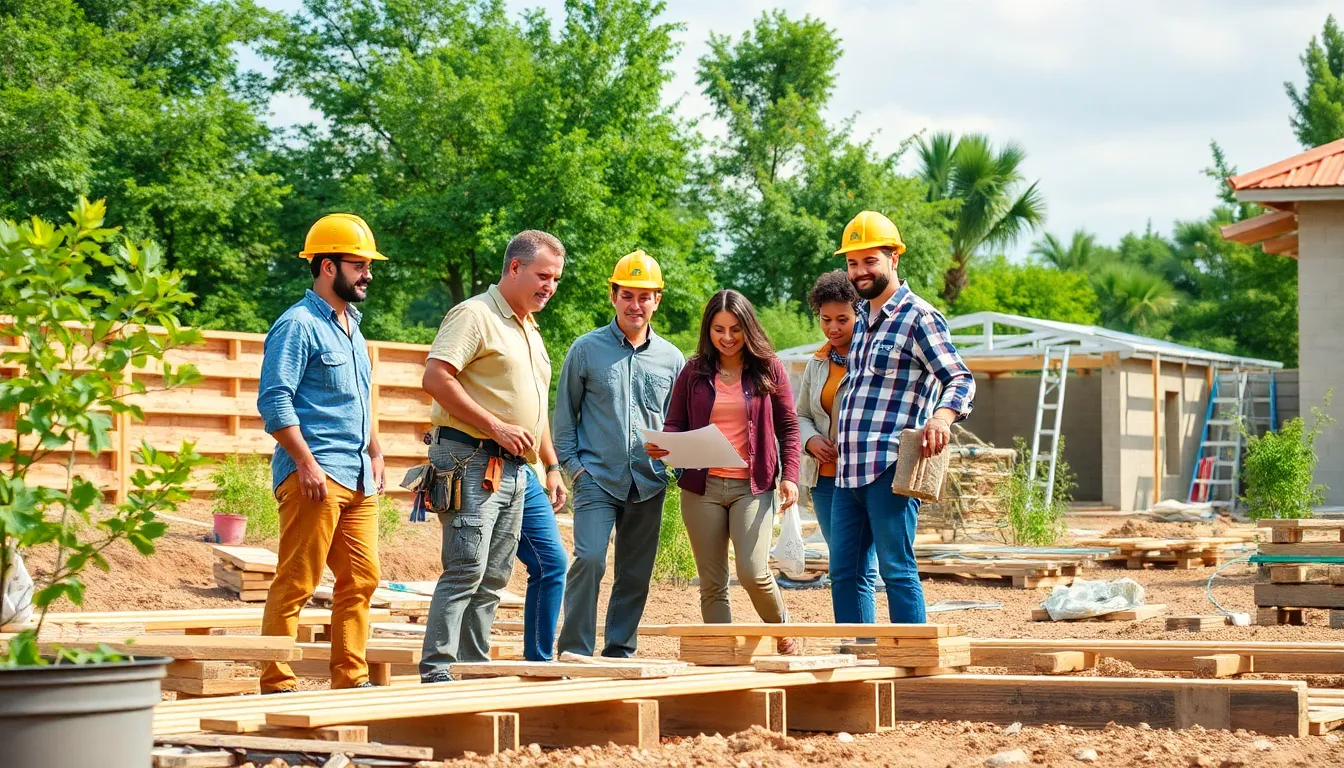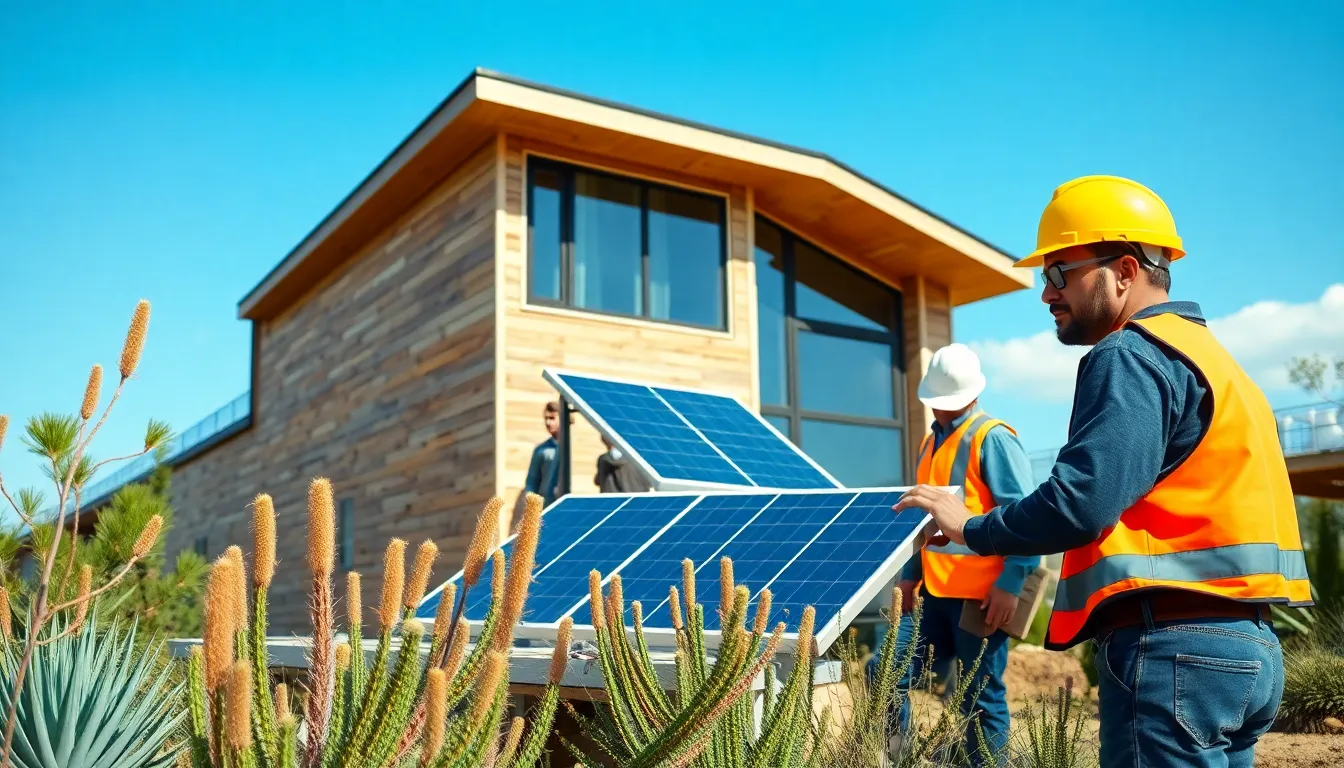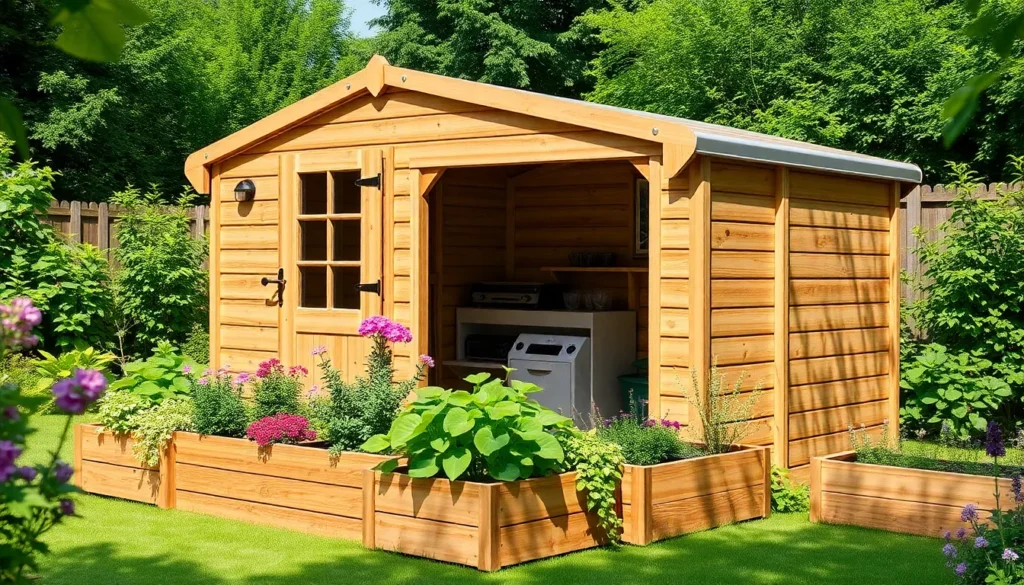In a world where eco-friendly choices are more crucial than ever, sustainable living builders are stepping up to the plate like eco-warriors in hard hats. These innovative professionals don’t just construct houses; they create homes that hug trees, dance with the wind, and make Mother Nature proud. If you think building green means sacrificing style, think again—these builders can turn recycled materials into jaw-dropping masterpieces that even your in-laws will envy.
From solar panels that soak up the sun to rainwater systems that would make a fish green with envy, sustainable living builders are redefining what it means to live responsibly. They’re not just crafting structures; they’re paving the way for a brighter, greener future. So, if you’re ready to trade in your carbon footprint for a cozy, eco-friendly abode, it’s time to explore what these builders have to offer.
Table of Contents
ToggleOverview Of Sustainable Living Builders
Sustainable living builders play a crucial role in eco-friendly construction. They focus on creating stylish homes that utilize innovative techniques and eco-conscious materials. Recycled components and renewable energy systems, such as solar panels and rainwater collection, comprise the core of their designs.
These builders prioritize environmentally responsible practices in every project. By integrating features like green insulation and energy-efficient appliances, they enhance the living experience while minimizing environmental impact. Architectural strategies often include passive solar design, which maximizes natural light and reduces reliance on artificial heating.
Various certifications and standards guide their work. LEED (Leadership in Energy and Environmental Design) and Passive House is notable systems that encourage sustainable practices in building design. Many sustainable living builders embrace these guidelines to ensure homes are both comfortable and eco-friendly.
Understanding the importance of location, they select sites that foster harmony with nature. Landscaping often incorporates native plants that require minimal irrigation, promoting biodiversity and conservation. Through careful planning, these builders contribute to local ecosystems while creating beautiful residential environments.
The impact of sustainable living builders extends beyond individual projects. They inspire communities to adopt greener lifestyles by showcasing the benefits of environmentally conscious living. Collaboration with local governments and organizations further amplifies their vision of a sustainable future.
Sustainable living builders redefine construction through innovative design and environmentally friendly practices. By integrating renewable resources, promoting efficient energy use, and enhancing community engagement, they pave the way for a more sustainable lifestyle.
Benefits Of Sustainable Living

Sustainable living builders offer numerous advantages that extend to the environment and economy. Embracing eco-friendly practices results in a significant reduction of carbon footprints.
Environmental Impact
Environmental impact represents a primary consideration in sustainable living. Fewer greenhouse gas emissions arise from energy-efficient designs. Water conservation methods, such as rainwater collection systems, boost sustainability. Biodiversity flourishes through the use of native plants and natural landscaping techniques. Habitat preservation occurs as sustainable builders select sites that minimize disruptions to local ecosystems. Innovations in building materials, like recycled components, promote resource efficiency. Communities benefit from cleaner air and healthier living environments due to these responsible practices.
Economic Advantages
Economic advantages accompany sustainable living practices including cost savings. Lower energy bills result from energy-efficient appliances and renewable energy systems, enhancing household affordability. Property values often increase with sustainable features, appealing to environmentally conscious buyers. Government incentives and rebates are frequently available, reducing initial construction expenses. Homeowners benefit financially over time due to reduced maintenance costs from durable, eco-friendly materials. Investing in sustainable living creates long-term economic resilience, securing savings for future generations.
Key Features Of Sustainable Living Builders
Sustainable living builders incorporate innovative approaches and materials to create eco-friendly homes that foster responsible living. They emphasize practices that benefit both the environment and the homeowner.
Eco-Friendly Materials
Sustainable builders utilize reclaimed wood, recycled metal, and other environmentally friendly materials. Such choices reduce waste and lower the demand for new resources. Bamboo is a popular alternative; it grows quickly and is highly durable. Additionally, builders often select low-VOC paints and finishes to improve indoor air quality. These materials help create structures that are not only stylish but also promote sustainability. Consideration for sourcing local materials minimizes transportation emissions, further enhancing their eco-conscious approach.
Energy-Efficient Designs
Energy-efficient designs characterize the work of sustainable builders, maximizing energy savings and comfort. Passive solar design strategies capitalize on natural sunlight, reducing the need for artificial lighting. Implementing proper insulation techniques ensures minimal energy loss, maintaining comfortable indoor temperatures year-round. Smart home technologies often integrate with these designs, allowing for efficient energy management. Moreover, the placement of windows focuses on optimizing daylight while decreasing heating and cooling expenses. Collectively, these features contribute significant long-term savings for homeowners while fostering a smaller ecological footprint.
Choosing The Right Sustainable Living Builder
Selecting an appropriate sustainable living builder involves careful consideration of various factors. Prioritizing expertise and proven results ensures a successful partnership in creating an eco-friendly home.
Researching Their Credentials
Investigate the builder’s qualifications thoroughly. Credentials such as LEED certification or experience in Passive House design indicate a strong commitment to sustainability. Verify their expertise in green building techniques by reviewing professional memberships and affiliations with industry organizations. Builders who actively participate in eco-friendly initiatives often demonstrate a deeper understanding of sustainable practices. Effective research includes checking online reviews and testimonials from previous clients, offering insights into their work ethic and quality of service.
Assessing Past Projects
Examine previous projects to gauge the builder’s capabilities. Reviewing portfolios reveals how well builders implement sustainable practices in real-world scenarios. Look for diversity in past projects, from single-family homes to larger developments, showcasing their adaptability and innovation. Analyze energy efficiency features integrated into these homes, as this reflects their commitment to eco-conscious living. Visiting completed sites provides first-hand experience of quality and attention to detail. Engaging with former clients can also provide valuable feedback on their satisfaction and the builder’s overall reliability in sustainable construction.
The Future Of Sustainable Living
Innovative practices set the direction for sustainable living builders, shaping eco-friendly construction methodologies. Builders prioritize renewable materials and energy-efficient designs, ensuring homes offer comfort while minimizing environmental harm. Adoption of smart technologies in homes also supports energy efficiency, allowing residents to monitor and manage their energy consumption effectively.
New building methods continue to emerge, emphasizing the significance of sustainable living. Builders often implement biophilic design principles that strengthen connections between residents and nature, improving overall well-being. Exchanging traditional materials for reclaimed and recycled options enhances sustainability, sparking interest in eco-conscious construction among homeowners.
Integration of solar roofs and rainwater harvesting systems exemplifies advancements made in this sector. These features not only harness natural resources but also significantly reduce utility expenses for homeowners. Energy-efficient appliances further contribute by decreasing energy usage, fostering reliance on renewable sources.
Communities benefit from the increased focus on sustainable living practices. These builders play a crucial role in bolstering local economies, particularly through jobs related to sustainable construction and maintenance. Enhanced property values also arise from eco-friendly designs, making them an attractive choice for prospective homeowners.
Greater collaboration among architects, engineers, and builders promotes innovative solutions for future projects. Sustainable living initiatives spark enthusiasm among neighborhoods, leading to a collective effort to create more environmentally friendly spaces. As more people embrace sustainable living, builders will undoubtedly continue to refine their practices, ensuring a greener future for generations to come.
Sustainable living builders are transforming the construction landscape by prioritizing eco-friendly practices that benefit both homeowners and the environment. By integrating innovative designs and renewable materials, they create homes that not only reduce carbon footprints but also enhance quality of life.
Choosing the right builder is essential for anyone looking to embrace sustainability. With a focus on energy efficiency and responsible living, these builders pave the way for a greener future. As communities rally around sustainable practices, the impact of these builders will resonate for generations to come.










